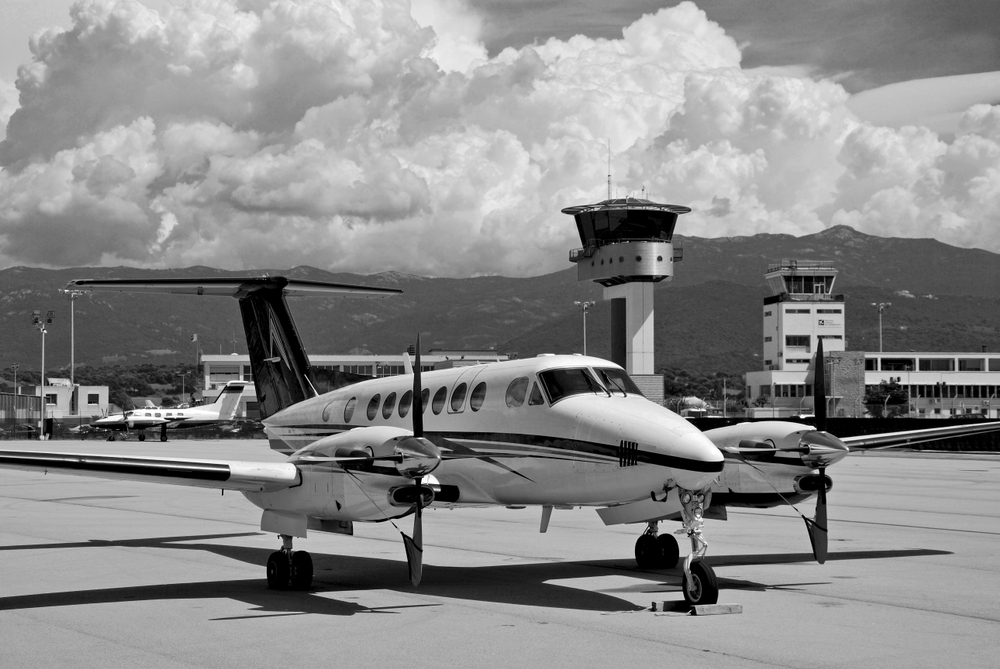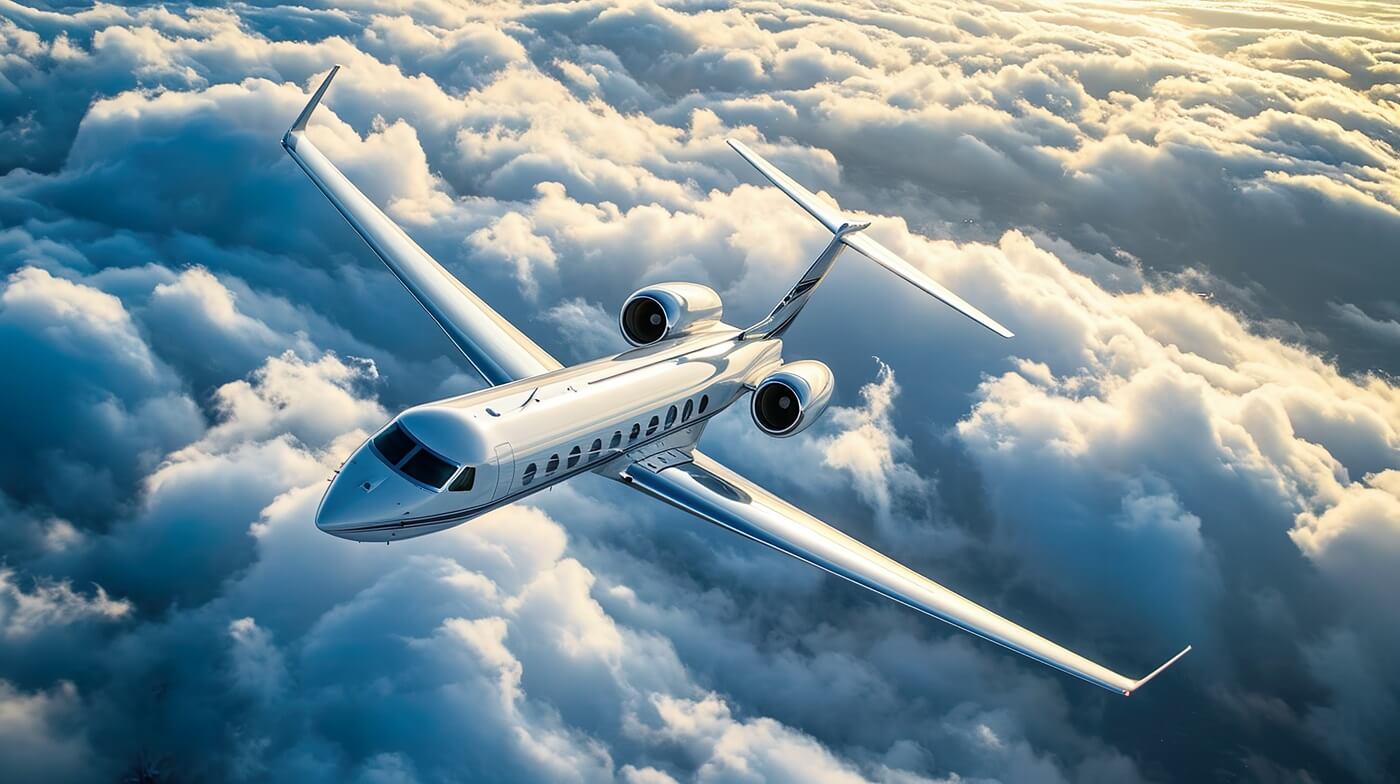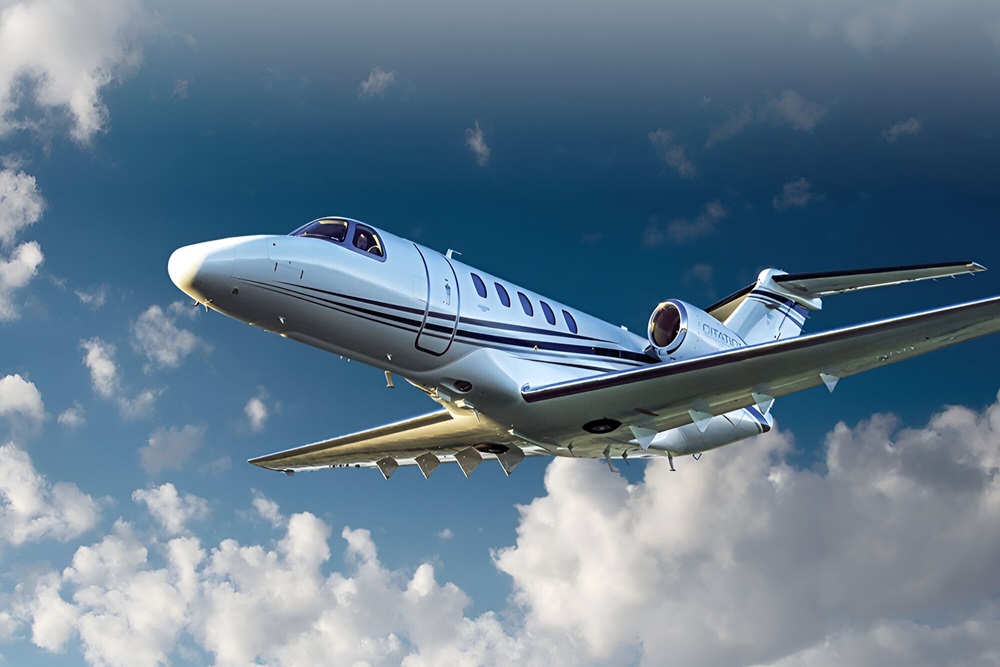As you ascend the steps of your private jet, you’re likely focused on the luxury and convenience that await. However, the environmental impact of your flight is an increasingly important consideration. Private aviation, while offering unparalleled flexibility and comfort, faces growing scrutiny for its carbon footprint. This article examines the environmental challenges posed by private jet travel and explores the sustainable solutions being implemented by the industry.
You’ll discover how innovative technologies and practices are helping to reconcile the desire for exclusive air travel with the imperative of environmental stewardship. Join us as we navigate the complex intersection of luxury, convenience, and sustainability in private aviation.
The Emissions of Private Jets
The environmental impact of private jets has become a growing concern in recent years. Private jet travel, while offering unparalleled luxury and convenience, comes with a significant carbon footprint. Studies show that private jets are 5-14 times more polluting per passenger than commercial flights. In fact, some private jets emit up to 2 tonnes of CO2 per hour, a staggering figure compared to the average person’s annual carbon output.
Addressing the Challenge
Recognizing this issue, the private aviation industry, including companies like Haute Jets, is taking steps to reduce emissions. Many private jets now feature advanced fuel-efficient engines and eco-friendly cabin materials. The adoption of Sustainable Aviation Fuel (SAF) is a promising development, potentially reducing lifecycle carbon emissions by up to 80% compared to traditional jet fuel.
Innovative Solutions
To further minimize environmental impact, some operators are investing in electric and hybrid-electric propulsion systems. These cutting-edge technologies, along with carbon offset programs, are paving the way for more sustainable private jet travel. While challenges remain, the industry’s commitment to eco-friendly innovation offers hope for a greener future in luxury air travel.

The Environmental Impact of Private Jets
Carbon Footprint Concerns
Private jets have come under scrutiny for their significant environmental impact. These luxurious aircraft emit between 10 to 20 times more carbon pollution per passenger than commercial flights, contributing disproportionately to aviation’s 2.8% share of global CO2 emissions. Despite being used by only a fraction of the population, private jet travel accounts for a substantial portion of aviation emissions.
Efficiency and Technological Advancements
However, the private aviation industry is not standing still. Companies like Haute Jets are at the forefront of adopting sustainable practices. Modern private jets are designed with lighter materials and aerodynamic structures, improving fuel efficiency by up to 20% compared to older models. Additionally, the integration of Sustainable Aviation Fuel (SAF) can reduce lifecycle greenhouse gas emissions by up to 80%, offering a promising path towards greener private jet travel.
Balancing Luxury and Responsibility
As the debate around private jet usage continues, the industry faces the challenge of balancing the demand for luxury and convenience with environmental responsibility. Innovative solutions like electric and hybrid propulsion systems are being explored to further reduce the carbon footprint of private aviation, paving the way for a more sustainable future in this exclusive sector of air travel.
Regulation of Private Jets
As the environmental impact of private jets gains increasing attention, regulatory bodies are stepping up efforts to address the carbon footprint of private aviation. The Federal Aviation Administration (FAA) and other international aviation authorities are implementing stricter emissions standards for private aircraft. These regulations aim to reduce the environmental impact of private jets while maintaining the luxury and convenience that Haute Jets clients expect.
Emissions Standards and Sustainable Practices
Private jet manufacturers are now required to meet more stringent fuel efficiency and emissions targets. This has led to the development of eco-friendly private jets that incorporate advanced technologies such as:
- Fuel-efficient engines
- Improved aerodynamics
- Lightweight composite materials
Many private jet operators are also adopting sustainable practices, including the use of Sustainable Aviation Fuel (SAF) and implementing carbon offset programs. These initiatives allow travelers to enjoy private jet travel while minimizing their environmental impact.
Future Regulatory Landscape
As the industry evolves, we can expect further regulations aimed at promoting sustainability in private aviation. This may include incentives for adopting green technologies and stricter reporting requirements for carbon emissions. Haute Jets remains committed to staying ahead of regulatory changes, ensuring our clients experience the pinnacle of luxury while supporting a more sustainable future for private jet travel.
Justifications for Private Jet Use
Time Efficiency and Productivity
Private jet travel offers significant time savings compared to commercial flights. Passengers can arrive just minutes before departure, avoiding long security lines and delays. This efficiency allows executives to save 1-5 hours per flight, maximizing productivity. The environmental impact of private jets is often offset by the ability to conduct business in-flight, utilizing onboard meeting spaces and AV systems.
Flexibility and Accessibility
Private jet travel provides unparalleled flexibility, with access to over 5,000 airports in the U.S. compared to just 500 for commercial airlines. This expanded reach allows travelers to land closer to their final destinations, reducing ground transportation time and carbon footprint. Haute Jets clients value this convenience, especially when visiting multiple locations in a single day.
Business Performance and Image
Studies have shown that companies utilizing private aviation outperform their peers in revenue growth and shareholder returns. The use of private jets projects an image of efficiency and success, which can be crucial for high-stakes business dealings. While considering the environmental impact of private jets, it’s important to note their role in facilitating deals that can lead to significant economic and social benefits.

Sustainable Solutions for Private Jet Travel
Embracing Eco-Friendly Technologies
The private jet industry is making significant strides towards sustainability. Leading manufacturers like Gulfstream and Bombardier are committing to using Sustainable Aviation Fuel (SAF), which can reduce carbon emissions by up to 80% compared to traditional jet fuel. This shift is crucial in mitigating the environmental impact of private jets. Additionally, advancements in electric and hybrid-electric propulsion systems are paving the way for greener private aviation.
Optimizing Operations for Efficiency
Private jet companies are adopting fuel-efficient practices and sustainable ground operations to further reduce their carbon footprint. This includes using electric taxiing systems and renewable energy at airports. Haute Jets, a premier private jet charter company, is at the forefront of these initiatives, offering clients access to a fleet of over 3,000 aircraft worldwide while prioritizing eco-conscious travel options.
Empowering Travelers to Make Sustainable Choices
Travelers can significantly contribute to reducing the environmental impact of private jet travel by choosing operators focused on eco-friendly practices. Many companies now offer carbon offset programs, allowing passengers to invest in environmental projects that counteract their flight emissions. By making informed choices, affluent clients can enjoy the luxury and convenience of private jet travel while minimizing their ecological footprint.
The Environmental Impact of Private Jets: Is It Worth It?
The Carbon Footprint Conundrum
Private jet travel undeniably carries a significant environmental impact. These luxurious aircraft emit substantially more carbon dioxide per passenger compared to commercial flights. According to industry reports, the private aviation sector is actively addressing this issue through innovative technologies and sustainable practices.
Balancing Luxury and Sustainability
While the environmental concerns are valid, the private jet industry is making strides towards reducing its carbon footprint. Haute Jets and other operators are adopting eco-friendly measures such as:
- Using fuel-efficient aircraft
- Participating in carbon offset programs
- Providing sustainable in-flight amenities
The Future of Green Private Aviation
The eco-friendly evolution of private aviation is promising. Sustainable Aviation Fuel (SAF) can reduce carbon emissions by up to 80% compared to traditional jet fuel. Additionally, electric and hybrid-electric propulsion systems are in development, potentially revolutionizing the industry’s environmental impact.
While private jet travel still produces more emissions than commercial flying, the luxury and convenience it offers, coupled with ongoing sustainability efforts, make it a viable option for those who prioritize both comfort and environmental responsibility.

FAQs
What is the environmental impact of private jets?
Private jets typically have a higher environmental impact per passenger than commercial flights. However, the private aviation industry is actively working to address this issue through various eco-friendly innovations and sustainable practices. Haute Jets and other private jet companies are investing in fuel-efficient aircraft, sustainable aviation fuel (SAF), and carbon offset programs to mitigate their environmental footprint.
How are private jet companies improving sustainability?
Companies like Flexjet are implementing comprehensive sustainability programs that offset 100% of their fleet’s carbon emissions. These efforts include:
- Adopting SAF, which can reduce lifecycle greenhouse gas emissions by up to 80%
- Investing in noise-reducing technologies
- Partnering with verified carbon offset projects
- Improving fuel efficiency through advanced aircraft design and lighter materials
What can passengers do to reduce their environmental impact when using private jet travel?
Passengers can opt for more fuel-efficient aircraft, choose operators that use SAF, and participate in carbon offset programs. Haute Jets offers personalized service that allows clients to make eco-conscious choices while still enjoying the luxury and convenience of private jet travel.
Conclusion
As you consider your travel options, it’s crucial to weigh the environmental impact of private jet use against its unparalleled convenience and luxury. While challenges remain, the private aviation industry is actively pursuing sustainable solutions to minimize its carbon footprint. By choosing operators committed to eco-friendly practices, offsetting emissions, and embracing cutting-edge technologies, you can enjoy the benefits of private jet travel while supporting a greener future.
As the industry continues to innovate, your choice to fly privately can align with environmental consciousness, ensuring that luxury and sustainability coexist in the skies. The journey towards more sustainable private aviation is ongoing, and your participation in this evolution is vital.

















































